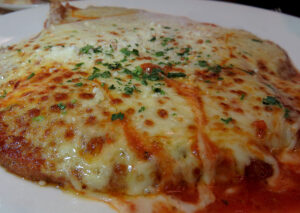The massages, the coddling, the special diets. Life as a Wagyu cow is pretty amazing (except for that one detail at the end). One can only imagine the time and effort that goes into caring for these special cows. It’s no wonder the meat from them is so amazing…and expensive!! So now you know the answer to the question about the relationship between wine price and quality. It takes time, effort and coddling to make a high-quality wine and doing so doesn’t come cheap.
Every great winemaker will tell you that great wine starts in the field. So, let’s begin with the old real estate adage and truism about what makes a great property great: location, location, location. And that translates to the bigger bucks, right? You want to be closer to the beach, it will cost you more. You want a vineyard in a perfect location to grow great wine grapes, it will cost you. Napa Valley makes some of the best Cabernet in the world. The vineyard land there is priced accordingly. For example, I have read that the cost of prime vineyard land in the Napa Valley can be more than $400,000 per acre, whereas in Lodi an acre might cost $30,000 to $46,000.
Oh, and the pampering of the grapes! Lower yields (less fruit per acre) equate to higher quality (the less grapes a vine produces, the more energy and good stuff there is to go into each grape, just makes sense, right?) But the lower the yield the less wine is produced so you have to charge more for each bottle you produce, or you would go out of business. Producers who want to make great wines go through great lengths to lower the yields, including pruning off not yet ripe bunches to allow their brethren bunches to grow better and more luscious. This is sometimes referred to as “dropping fruit” or “Green Harvesting.” I sometimes think how the vineyard owner must think as she watches potentially viable grapes drop to the ground. In one sense, it’s like pruning money off a money tree. So, the vineyard owner will need to recoup that pruned money by charging more for the higher quality fruit she will get from her vines.
Next: More dropped/omitted fruit! During the harvest and/or after the grapes are just harvested, only the best of the already thinned out bunches/grapes are selected to be used in making the wine. This is done at the time of harvest and/or at a “sorting table” where less than perfect grapes are discarded. In extreme cases (e.g., the very expensive Sauternes Chateau d’Yquem) the grapes are hand-picked berry by berry so only the best grapes come in from the field.
Oak! Certain of our most favorite wines, (e.g., Cabernet and Chardonnay) can sometimes benefit from fermentation and/or aging in oak barrels and the best oak barrels are VERY EXPENSIVE…a new French oak barrel can cost upwards of $2000 a barrel. And some of the best wines are made in a high percentage of new barrels for each vintage of wine. Often, lesser wines are made with a higher percentage of used barrels. Or worse, instead of using actual oak barrels to impart the oak essences many wine consumers desire, certain lower tier (cheaper) wines are made by soaking the wine in oak chips rather than using oak barrels which while imparting oak flavors, doesn’t approach the beautiful toasty, vanilla, caramel qualities imparted by high quality oak barrels.
So great wine doesn’t come cheap. That of course is not to say that there are not great wines made at lower price points…there are! And that doesn’t mean that other factors such as simple supply and demand, media hype and other factors don’t play into the high cost of some wines. But in the simplest terms, there can be good reasons why there is a very real relationship between the price of a wine and the quality. Hope you enjoy your next glass of “Wagyu Wine”!!
The two wines pictured are great examples of wines that are costly but well worth the price. Pahlmeyer and Paul Hobbs are two of my favorite producers and both of these wines, while expensive, deliver well over their cost. The Pahlmeyer, Jason, Napa Valley, Cabernet Sauvignon is a phenomenal bottle for less than $100 but drinks like a wine well over $100. Similarly, the Paul Hobbs, Russian River Valley, Chardonnay overdelivers at a cost of less than $75. These are two classic wines that are worth every penny of their admittedly expensive price point.
Cheers! Ray
If you enjoyed this article, please join the Cuvée Ray Wine Lovers Facebook Group. Simply CLICK HERE for some fun wine discussions among wine lovers. Or, check out my Cuvée Ray Wine Lovers Academy website HERE.































